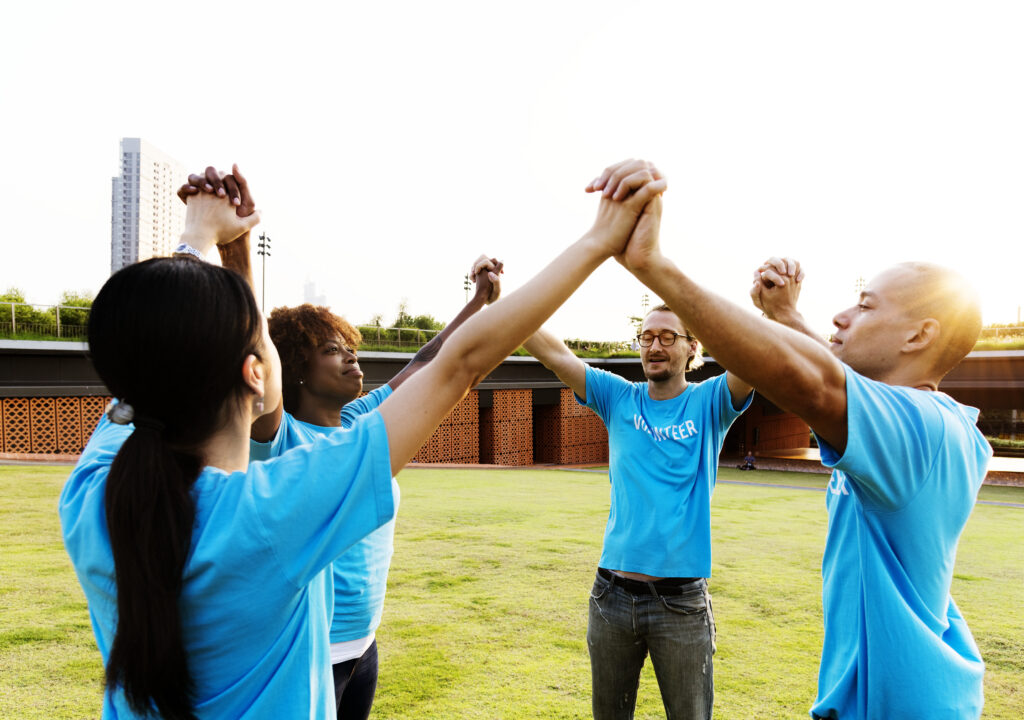
There is a general fallacy about youths that they should not be heard nor taken seriously. However, youths are a source that is not utilized by organizations in forms of their vast creativity. Nowadays, youths are talented communicators, knowledgeable and they can utilize various medias and technologies better than the older generations as they are representants of the future. Organizations should see potential in youth-led events where youths are given the possibility for a more powerful role and organize a successful event with a significance.
Authors: Bianca Cuéllar, Krista Vidgrén & Brett Fifield
Co-creating with young people helps with service design
Now when we are moving into the new normal after the pandemic, the definition of live sports events continue to evolve. Organizations have to find ways to attract attendees back to stadiums, while finding new ways to satisfy the younger generation and adding social value for the live sports events from a customer journey perspective. Cuéllar and Vidgrén (2022) have clarified these issues in their thesis.
One thing that many people may agree is that service design is a way of creating by thinking about user experience, using a combination of intangible and tangible mediums. A holistic service is a bird’s eye view of the service, it takes into consideration all aspects of a customer journey for the end-user and the environment. (Stickdorn et al. 2018; Moritz 2005).
Organizations can give decision making opportunities, power, and responsibility in adult projects for youths to attract them to participate more. The potential gain can be recognized by understanding their needs and expectations by forming adult-youth collaborations and simply taking the journey together. The objective is giving youth the ownership of an activity along with a feeling that they are contributing. Providing youth to connect with an environment that supports development individually and as a community.
Co-collaboration spaces in sports events
Youth participation is a space of empowering potential, where the participation is a process of learning. This dynamic potential can be a formed by experiences while producing successful outcomes for organizations.
One of the 17th United Nations Sustainable Development Goals is about collaborations. In a broader view it is a goal of transforming the world and creating a partnership ecosystem.
Forming collaborations can be seen from a creating shared value approach which is a new way to understand markets, competition, and business management. It requires managers to think differently and understand social and environmental issues and have an entrepreneurial mind-set to implement and design the shared value model. (Kramer & Pfitzer 2016; Porter & Kramer 2011.)
The idea of creating shared value is to do business in a smart way, rethinking the business issues, having a more open mindset to new possibilities, and creating societal value and avoiding a narrow way of thinking. At the same time, organizations should recognize that the shared value approach is a long-term commitment.
Simultaneously, value is formed by co-creating in collaborations in joint opportunities where all parties have mutual interest and same objectives with different kinds of resources to add value economically, societally, and environmentally. (Austin & Seitanidi 2014.)
Collaborate spaces aims to provide models of change management for these organizations to execute the Creating Shared Value strategy in form of youth participation by getting them interested in anything.
When planning event organizers should consider using a social issue, creating shared value and sustainability in the event to gain associational value from forming collaborations with partners and achieve a competitive advantage.
As the purpose of collective impact is to activate resources from all participants. All participants need to identify the issue from their point of view but also reach to a mutual understanding of the problem and share a common vision of the solution. (Kania & Kramer 2013.)
The challenges for listening youths
There should be a low threshold on youth participation, organizations should not be restricted to budgets when it comes to youth projects and understand that the return on investment will come later.
There should be encouragement of youth involvement in organizations and to find roles for them to bring forward their own ideas and input, inspire development and advance the sports organization for the younger generation. As members of the youth segment themselves they are more familiar to issues and can better relate to them and encourage youth participation. Consecutively, while working together with youths the organization can form a connection to the youth and gain comprehension of the specific customer segment, they are focused on increasing and increasing the youth’s social capital in return (Morrow 1999).
Organizations should draw attention on the methods of communication with youth groups to building trust by supported actions and involving them in the decision-making progress to empower themselves. (Organizing Engagement 2022.)
All in all, chance management the missing puzzle piece in youth participation, it is the most important component for creating new ideas, willingness to try something new and taking action to implement these new visions, is largely due to the business culture. By doing things how it is done previously is a very comfortable way and it keeps the status quo.
Might want to consider creating participatory events?
Organizations should consider youths’ perspective since youths are not restrained by their experiences like adults, instead they pose the ability to be creative and imaginative without limitations.
The best way is to incorporate youth participation to successfully attract more younger customer groups. If an organizations strategy is to increase the youth segment as attendances in events.
Organizations can listen by hearing youth opinions, providing access and transparency by sharing power and accountability. Collaborating with organizations combined with meaningful youth engagement can change the societies of the future.
It is said, the journey is a destination, so let’s journey!
References
Austin, J.E. & Seitanidi, M.M. 2014. Creating Value in Nonprofit-Business Collaborations, New Thinking and Practice. San Francisco: Jossey-Bass.
Cuéllar, B. & Vidgrén, K. 2022. Customer at the center of a live sports event. Case: Motonet GP Lahti. Master’s Thesis. LAB University of Applied Sciences, Master of Business Administration. Cited 11 May 2022. Available at https://urn.fi/URN:NBN:fi:amk-202205098024
Kania, J. & Kramer, M. 2013. Embracing emergence: How collective impact addresses complexity. Cited 28 February 2022. Available at https://doi.org/10.48558/ZJY9-4D87
Kramer M. R. & Pfitzer, M. W. 2016. The Ecosystem of Shared Value. Harvard Business Review. Cited 1 September 2021. Available at https://hbr.org/2016/10/the-ecosystem-of-shared-value
Moritz, S. 2005. Service Design practical: practical access to an evolving field. Cited 13 April 2022. Available at https://issuu.com/st_moritz/docs/pa2servicedesign
Morrow, V. 1999. Conceptualizing social capital in relation to the well‐being of children and young people: a critical review. The sociological review. Vol. 47(4), 744-765.
Organizing Engagement. 2022. Ladder of children’s participation. Cited 28 March 2022. Available at https://organizingengagement.org/models/ladder-of-childrens-participation/
Porter, M. E. & Kramer, M. R. 2011. Creating Shared Value. Harvard Business Review. Cited 1 September 2021. Available at https://hbr.org/2011/01/the-big-idea-creating-shared-value
Stickdorn, M., Hormess, M. E., Lawrence, A., & Schneider, J. 2018. This is service design doing: applying service design thinking in the real world. ” O’Reilly Media, Inc.”.
Authors
Bianca Cuéllar studied at LAB University of Applied Sciences Master’s Degree Programme in International Business Management.
Krista Vidgrén studied at LAB University of Applied Sciences Master’s Degree Programme in International Business Management.
Brett Fifield is a Senior Lecturer in the faculty of International Business Management.
Illustration: https://pxhere.com/en/photo/1448687 (CC0)
Published 13.5.2022
Reference to this article
Cuéllar, B., Vidgrén, K. & Fifield, B. 2022. Listening to youths can be challenging! LAB Pro. Cited and date of citation. Available at https://www.labopen.fi/lab-pro/listening-to-youths-can-be-challenging/






